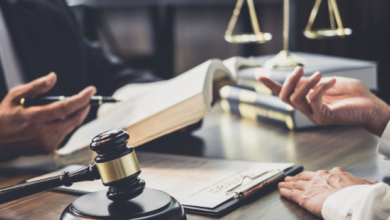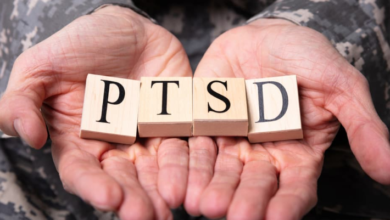Investigate the World of Legal Animations, Their Structured Process and Purpose.

Legal animations have become a powerful tool for simplifying complex legal concepts, engaging audiences, and bringing the law to life. 3D animated videos for legal purposes are a form of demonstrative evidence like photos, diagrams, and maps.
In a nationally significant ruling, the appeals court upheld the use of one such video in the 1993 hit-and-run trial of Kenneth Pierce, the animated scene was used merely to illustrate an expert’s opinion in the courts preceding.
This was the first time legal animations were used in court processing and were made permissible by the honorable court.
Justice Courts have insisted that law animations are permissible as demonstrative proof under some legal conditions. Although the requirements can change across states, countries, and court systems, they usually say that the animation is permissible as long as it is fair, accurate, and not prejudicial.
This blog delves into the domain of legal animations, exploring how they contribute to legal understanding, advocacy, and the overall accessibility of the legal system.
What do Legal Animations Involve?
Law animations in the legal system are used for the visual representations of legal concepts and processes created through animation techniques. These animations use graphics, movement, and often narration to explain complicated legal concepts in a more accessible and engaging manner. They serve as an educational tool for helping individuals understand the legal principles, procedures, and stories through 3D animation’s power of visual storytelling. These legal animations cover various legal subjects, including contract law, criminal law procedures, courtroom processes, intellectual property rights, etc. The primary goal of legal animations is to simplify the intricate legal information and make it easy and digestible for individuals, whether they are law students, legal professionals, or members of the general public.
Permissibility of Legal Animations
The permissibility of legal animations as evidence depends on the jurisdiction and the specific rules of evidence that apply. Legal animations are considered permissible when relevant, authentic, and reliable.
Relevance
Law animations must be relevant to the issues in the case. It should help to explain or clarify a fact or event that is in dispute or is crucial to understanding the case.
Authenticity
The party offering the legal animation as evidence must establish its authenticity. This typically involves demonstrating that the animation accurately represents the events or processes it seeks to depict. The source of the animation, the methodology used in its creation, and the qualifications of the person who created it may be factors considered in assessing its authenticity.
Reliability
The animation should be considered reliable. This means that the methods used to create the law animation should be scientifically or technically accepted and reasonably accurate. The court may consider factors such as the accuracy of the underlying data, adherence to recognized standards or practices, and peer review or acceptance of the methods used in creating the animation.
Expert Testimony
The party offering the animation must often present expert testimony to support its admissibility. The expert witness can explain the methodology used in creating the legal animations, vouch for its accuracy and reliability, and provide context or interpretation of the animation for the court.
Potential Prejudice
The court will also consider whether the animation has the potential to unfairly prejudice the jury or confuse the issues in the case. The animation may be excluded from evidence if it is deemed overly prejudicial or misleading.
Purposes to Adapt Legal Animations
Visualizing Legal Concepts
Animations provide a dynamic way to visualize intricate legal concepts, making them more accessible to a broader audience. From explaining the intricacies of contract law to illustrating courtroom procedures, legal animations break down various subjects into digestible, engaging visuals.
Legal Education
Animated content is integrated into law school curricula and legal training programs to enhance the learning experience. These law animations break down complex legal theories, statutes, and case law into visual narratives.
Courtroom Presentations
In the courtroom, attorneys utilize legal animationsto present evidence, reconstruct events, and strengthen their arguments. Animated reconstructions can be particularly impactful in personal injury or criminal cases, where a visual representation of events can sway the opinions of judges and juries.
Public Legal Awareness
Legal professionals and organizations use legal animation servicesto communicate legal information to the general public. These animations are designed to be easily understood by individuals without a legal background, promoting legal literacy and awareness.
Online Legal Resources
With the digitalization of legal information, legal animationsare increasingly used on websites, social media, and other online platforms to convey legal advice, rights, and responsibilities in a more engaging format.
What is the Process for Preparing Legal Animations?
It is important to follow a structured process when seekinglegal animation services or working with 3D animation studios for lawful purposes.
- Identify reputable 3D animation studios that specialize in law animation services.
- Conduct thorough research to ensure their expertise, experience, and track record align with your specific legal requirements.
- Once you have selected the right 3D animation studio, communicate your needs clearly, providing all relevant information, documents, and data related to the case or concept you want to animate.
- Collaborate closely with the 3D animationteam, including legal professionals and experts, to ensure accuracy and authenticity.
- The studio will utilize its skills and software tools to create legal animations, adhering to recognized standards and practices.
- Regular communication and feedback loops should be established throughout the process to ensure alignment and address concerns.
- Once the animations are completed, review and verify their accuracy and relevance.
- If necessary, expert testimony can be used in court to support the admissibility and credibility of the animations.
Remember to discuss the legal requirements and rules of evidence in your jurisdiction when presenting law animations in court.
Summarizing
In the legal system, animations refer to visual representations or simulations that depict a particular event, process, or concept relevant to a legal case or proceeding. These legal animations are typically created using computer-generated graphics, and they can be presented as evidence or used as a tool for explanation and understanding. Moreover, they raise public legal awareness by communicating legal information in an easily understandable format. As legal animation continues to evolve, it is important to work in a structured process when preparing animations, collaborating with reputable 3D animation studios, and ensuring accuracy and authenticity for success in your purpose.




